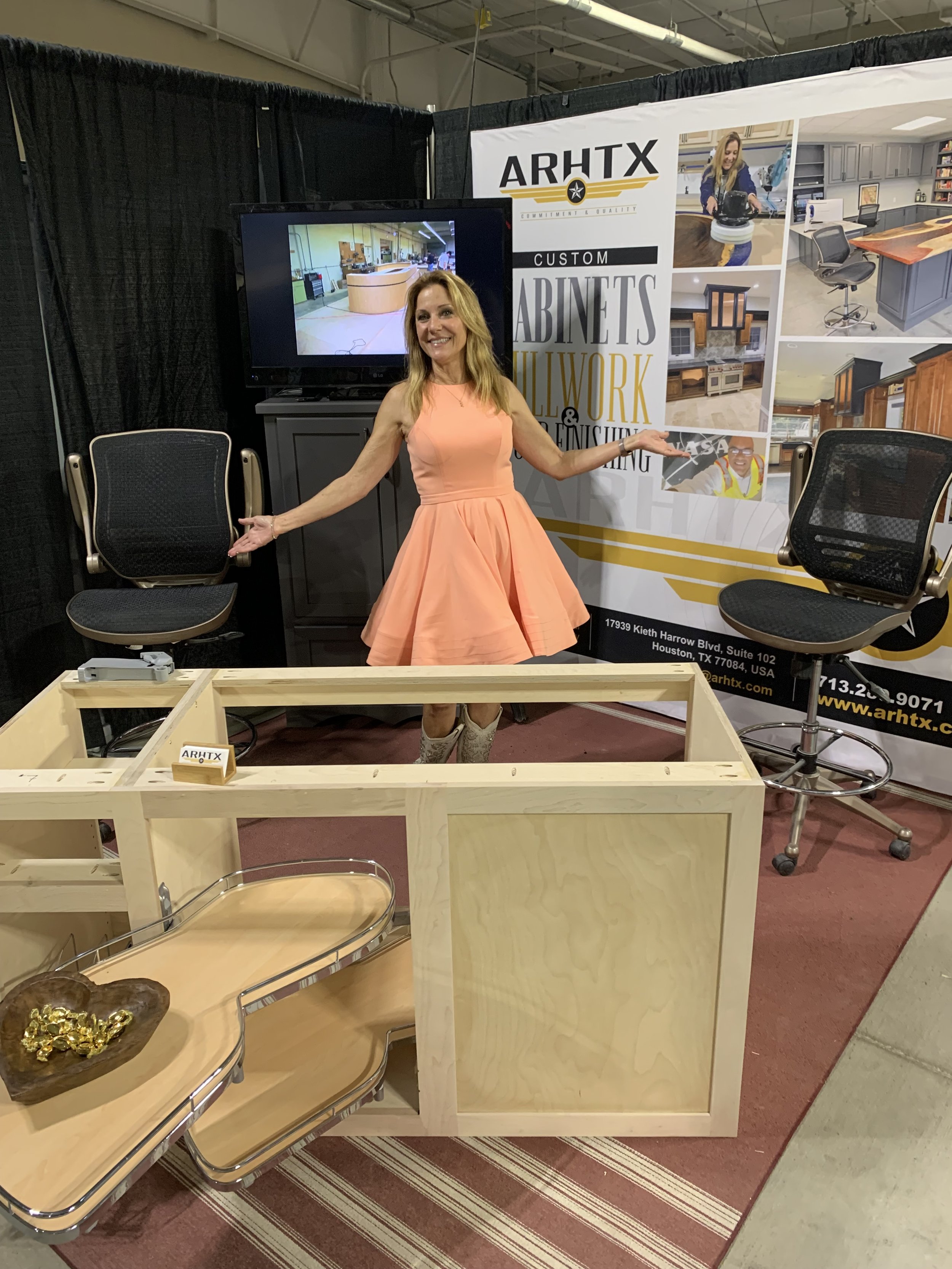Cheating Yourself with Particle Board Construction
Plywood rather than particle board construction is more durable and allows for greater versatility in design.This is an industry-wide debate: Plywood or Particle board, which is best for construction? Price is a common refrain for the overuse of particle board. It’s cheaper than plywood. But with the substandard product it creates, particularly for cabinet construction, the cost savings are not significant.
Water absorption is an issue with particle board. Once particle board gets wet, it’s a perfect breeding ground for mold and mildew. And this doesn’t just mean pouring water on particle board. With the moisture in the Houston environment, everything is soaking in a high humidity that destroys and decays particle board quickly. Particle board in moist southern environments lasts only 3 to 5 years till the shelves sag and the cabinet falls apart completely. Plywood constructed cabinets can last 30 years or longer. Plywood is more resistant to water absorption.
Particle board was designed to be a temporary solution for furniture or flooring that needed to be moved frequently. The pieces were lightweight and could be disassembled and reassembled easily. Particle board was first employed in cabinet making in the early 1950’s when lumber was in short supply. The temporary nature of particle board is evident in the lack of quality that it brings to permanent fixtures like cabinets. In matching the right material to the job, plywood in cabinet construction has a robust, resilient nature like a fine piece of furniture.
Screws cannot be used adequately in particle board construction. This means that mounting fixtures like hinges and drawer glides should go into something that provides support like plywood or natural wood. This is a limiting design feature. Many cabinets ordered from cabinet warehouses or remodelers have the fixtures screwed into the glued together wood chips, shavings and dust that make up particle board. That construction never lasts long. The screws work their way loose and the hinge or drawer glide sags until it completely pulls out—with no ability to reset the screw.
Finally, the look of particle board and plywood are very different. Particle board has a plastic, uniform surface where plywood has a natural and warm appeal. Where particle board is used to create the cabinet box, the surfaces are frequently left unpainted inside and the particle board will stain and warp easily.
Plywood is the craftsman’s choice for cabinet construction. The difference in price is not great and in the long run it will be a better deal to invest in a long-term product like plywood. The knowledge and experience you need for all your cabinets and millwork is with a master craftsman who can advise you on the best materials for your job.
